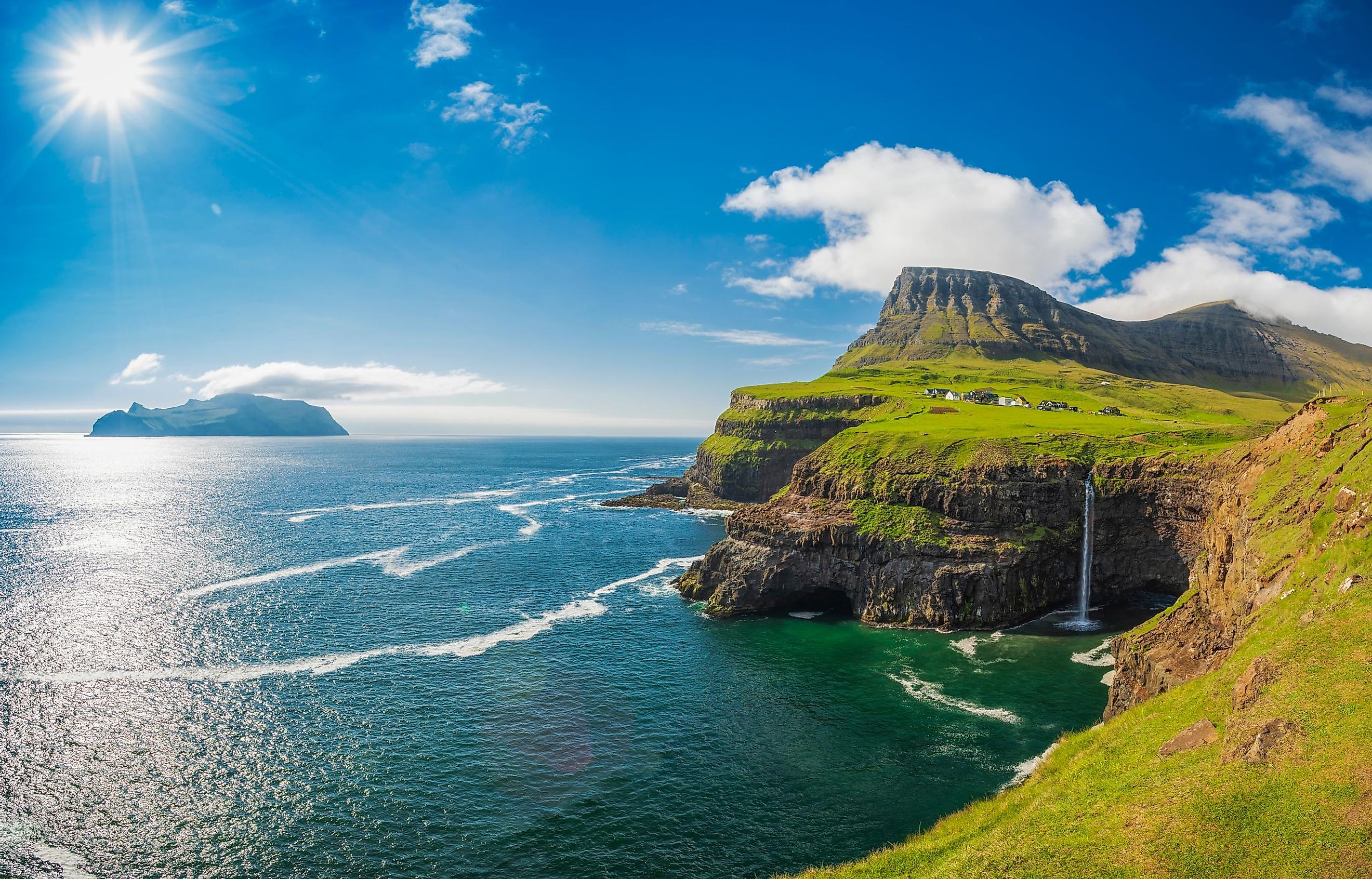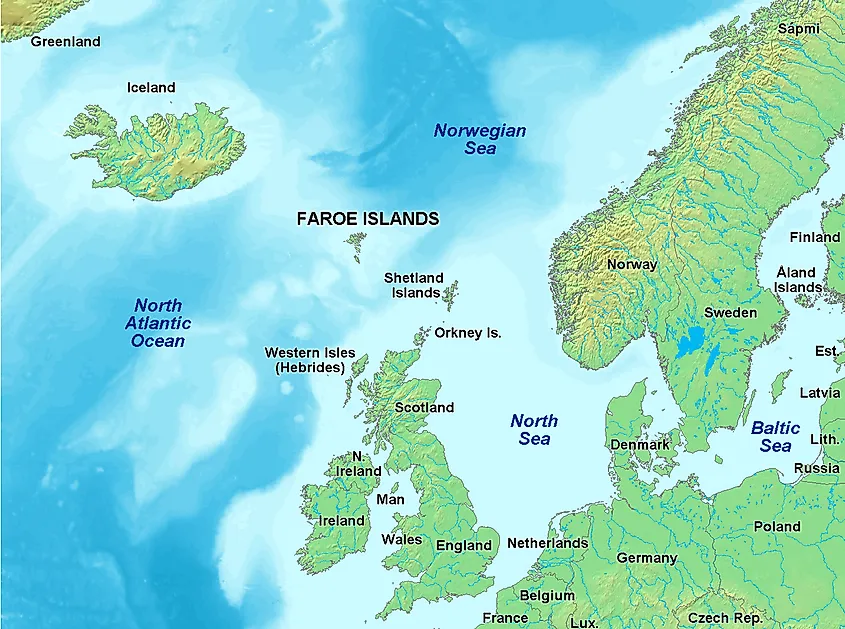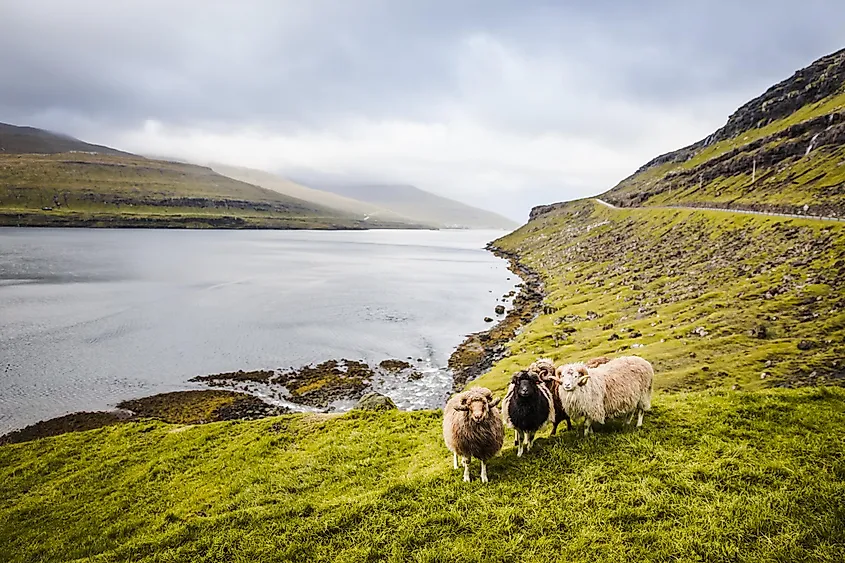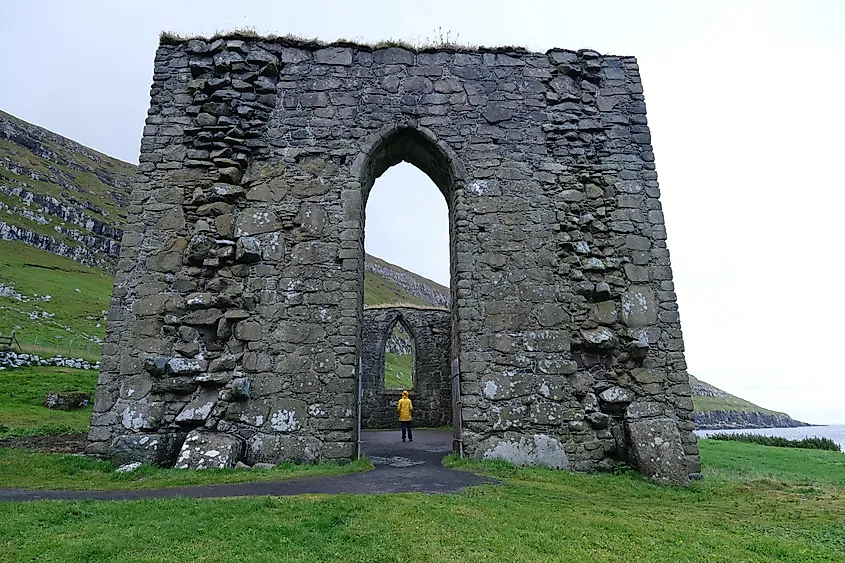
Faroe Islands
The Faroe Islands are an archipelago in the North Atlantic Ocean that forms a self-governing autonomous territory within the Kingdom of Denmark. The archipelago is located approximately 655 km from the coast of Northern Europe. The Faroe Island group is positioned between the North Atlantic Ocean and the Norwegian Sea and is situated exactly midway between the Nordic nations of the Kingdom of Norway and Iceland. The Faroe Islands are bordered by the Northern Isles archipelago and the Outer Hebrides Island chain of Scotland.
Geography

Covering a total area of about 1,399 km2, the Faroe Islands archipelago comprises 18 principal islands along with numerous small rocky islands and islets. Some of the major islands of the archipelago include Borðoy, Eysturoy, Sandoy, Streymoy, Suðuroy, Svínoy, and Vágar. Out of the 18 main islands of the archipelago, 17 of these islands are inhabited while only the small Lítla Dímun island is uninhabited.
Covering an area of 373 km2, the oblong-shaped Streymoy Island is the biggest and the most populous in the Faroe Islands archipelago. Located on the southern edge of the Streymoy island is Tórshavn, the capital and main port of the Faroe Islands archipelago. Eysturoy is the second-largest island on the archipelago that covers an area of about 286.3 km2. The islands are further administratively divided into 29 municipalities that consist of more than 120 settlements.
The Faroe Islands have rugged and rocky terrain and are mainly composed of basaltic lava. There are few small elevated peaks and the highly indented coast of the islands features several fjords that are further lined by numerous perpendicular cliffs. Located in the northern part of Eysturoy Island is Slættaratindur, which rises to an elevation of 882 m and is the highest point in the Faroe Island archipelago. There are few small rivers and minor lakes in the Faroe Islands archipelago.
According to the Köppen climate classification, the Faroe Islands experiences a subpolar oceanic climate with mild winters and cool summers. The climate of the archipelago is strongly influenced by the warm North Atlantic Current, which helps to keep the harbors on the island ice-free throughout the year. The islands also face frequent fog and rains, and strong winds blow over the archipelago throughout the year. The North Atlantic hurricanes occasionally strike the Faroe Islands during the summer months.
Wildlife

The vegetation of the Faroe Islands archipelago is dominated by grass, wildflowers, moss, arctic-alpine plants, and lichen. Due to the strong westerly winds and frequent gales that are faced by the archipelago, the Faroe Islands are mostly treeless although a few hardy trees have recently been introduced in the sheltered plantations of the islands.
Numerous avian species are found on the Faroe Islands. These include the various species of seabirds, common starling, common murre, common eider, Atlantic puffins, Eurasian wren, and the black guillemot. Few terrestrial animals are found here including the mountain hare, brown rat, house mouse, Faroe sheep, Faroe cow, and Faroe pony.
Several cetacean species are recorded in the waters surrounding the Faroe Islands. Grey seals and long-finned pilot whales are also found here. Killer whales are frequently observed around the Faroe Islands.
Brief History

The name of the Faroe Islands first appeared as Føroyar in the Faroese language. The Danish name for the Faroe Islands, Færøerne, is a reflection of Old Norse terms that likely mean “Sheep Islands.” The Faroe Islands were originally inhabited by the Irish monks and then by the Vikings in the early 9th century. The Faroe Islands became a part of the Hereditary Kingdom of Norway in 1035 and 1380 along with the rest of Norway, they were taken over by Denmark. Under the Treaty of Kiel in 1814, the Danish gained complete authority over the Faroe Islands along with Greenland and Iceland. The Faroe Islands became an autonomous country within the Kingdom of Denmark in 1948.











